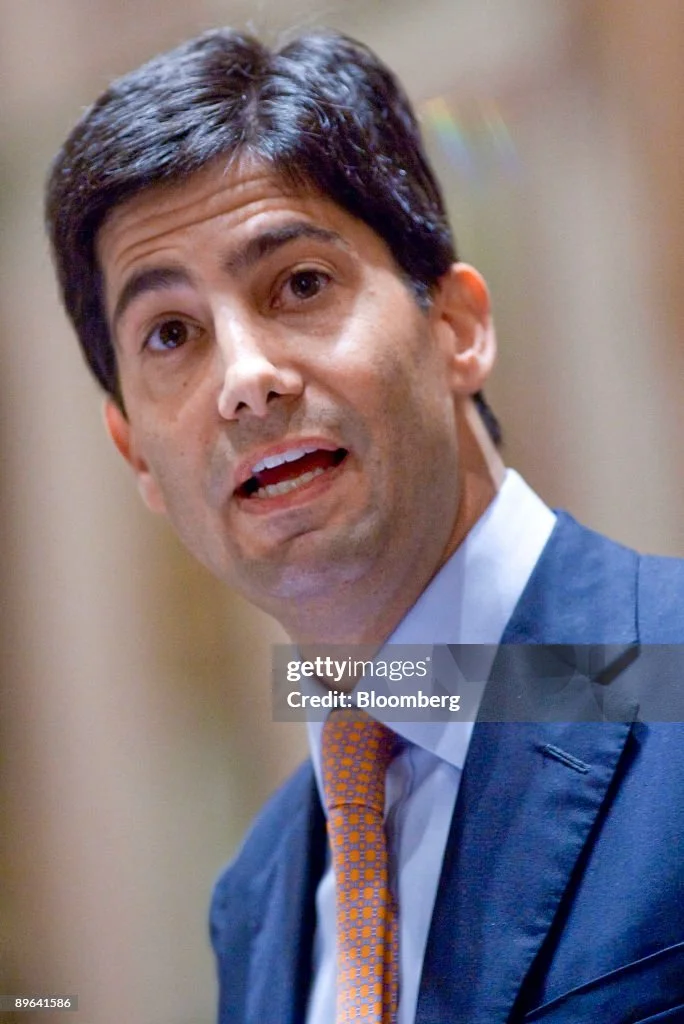Kevin Warsh: His Fed Chair Ambitions, Net Worth, and Key Connections
In the world of economic policy, certain names function less as identifiers and more as signals. The name Kevin Warsh has re-entered the conversation, and with it, the potent, almost revolutionary phrase: “regime change” at the Federal Reserve. It’s a term designed to grab headlines, suggesting a dramatic break from the status quo.
As an analyst, my first instinct is to disregard the slogan and examine the underlying data. The narrative being built around Warsh is that of an insider-turned-reformer, someone with the institutional knowledge to dismantle the old machine and the foresight to build a new one. He speaks of a new "partnership with the Treasury," a concept that sounds collaborative but warrants intense scrutiny. The market, for its part, is trying to price in what a potential Kevin Warsh Fed chair would actually mean for monetary policy. But before we can project forward, we have to look back at the numbers and the record. Because in finance, a track record is the only dataset that truly matters.
The Discrepancy in the Data
Kevin Warsh’s history with the Federal Reserve is the first and most critical part of the analysis. Appointed as a Fed governor in 2006 at an unusually young age, he was in the room during the most consequential financial crisis of our lifetimes. He was part of the emergency response team, a key lieutenant to then-Chairman Ben Bernanke. This is not the resume of a revolutionary; it’s the resume of an establishment crisis manager.
The discrepancy appears in the post-crisis years. After leaving the Fed in 2011, Warsh became a vocal critic of the very policies—quantitative easing, extended low-interest rates—that were the logical continuation of the crisis-era interventions he helped design. I've looked at hundreds of these career arcs, and this particular pivot from policy architect to public critic is unusual. He argued for a more hawkish stance, warning of inflation and financial instability long before they became mainstream concerns. Some might call this foresight. A more skeptical analyst would call it a repositioning.
This presents a fundamental modeling problem. Which Kevin Warsh would lead the Fed? The pragmatic crisis-fighter of 2008, or the hawkish Hoover Institution fellow of 2015? His call for a “partnership” with the Treasury only complicates the forecast. Historically, the Fed’s most prized asset is its independence from the fiscal side of government. A "partnership" could be interpreted as a move toward coordination, or, less charitably, as a signal to a future administration that the Fed would be a more compliant, politically attuned entity. What does that do to the Fed’s credibility, its only real currency? And how can you quantify the risk of political capture?

An Unquantifiable Independent Variable
When the data is ambiguous, analysts look for other variables. In this case, the external factors surrounding Warsh are significant and cannot be ignored. His marriage to Jane Lauder, an heiress to the Estée Lauder fortune, is more than a biographical detail. It places him in a sphere of influence and capital far beyond the typical economist or public servant. The Kevin Warsh net worth is, as a result, substantial (the Lauder family’s fortune is a multi-generational, multi-billion-dollar enterprise), insulating him from the financial pressures that might affect other officials.
This connection acts as a powerful, but unquantifiable, independent variable. Does it make him a more independent actor, free to make unpopular decisions? Or does it embed him more deeply within a particular class of interests whose priorities may not align with the Fed’s dual mandate of price stability and maximum employment? This is the part of the analysis that I find genuinely puzzling. We can model interest rate probabilities and inflation expectations, but we have no reliable model for the influence of dynastic wealth on monetary policy decisions.
This is where we must perform a methodological critique of the entire "Warsh for Fed" thesis. The discussion is dominated by qualitative assessments of his ideology—hawk versus dove—and his political connections. But the quantitative impact is treated as a secondary concern. The market’s initial reaction to his nomination would likely be a sharp move in Treasury yields, perhaps a 20-basis point jump—to be more exact, a 20 to 25-point repricing of the entire curve to account for a hawkish risk premium. The real question is what happens after that. Would his policy be driven by a rigid framework, or would it be the pragmatic, data-dependent approach of his predecessors? His public statements are a mix of both, creating a signal that is exceptionally noisy.
An Audition, Not a Doctrine
Ultimately, the narrative surrounding Kevin Warsh feels less like a coherent economic doctrine and more like a well-executed political campaign. The language of “regime change” and “Treasury partnership” seems tailored to a specific political audience that views the Federal Reserve with suspicion and desires a fundamental overhaul. It’s an audition for a role, not a detailed policy paper.
The problem is that the Federal Reserve is not a startup in need of a disruptive CEO. It’s the bedrock of the global financial system, and its primary product is stability. While a fresh perspective is always valuable, a leader whose policy signals are intentionally ambiguous creates uncertainty. And uncertainty is just another word for risk—a risk that the market will have to price, and that the economy will have to bear. The data from his past is contradictory, and the signals about his future are too noisy to form a high-confidence forecast. We are left analyzing the man, not the math. For an analyst, that’s a deeply uncomfortable position.
Tags: kevin warsh
Liechtenstein: The Prince, The People, and the Future of a Micro-Nation
Next PostThe Slerf Phenomenon: Why It Exploded and What It Reveals About Our Digital Future
Related Articles
